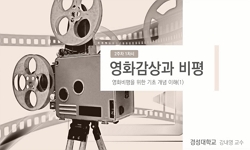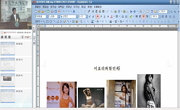The purpose of this paper is to analyze a classroom lesson of history where movie posters were used as visual teaching materials for students to communicate historically. Students` responses were observed and educational significances of this history ...
http://chineseinput.net/에서 pinyin(병음)방식으로 중국어를 변환할 수 있습니다.
변환된 중국어를 복사하여 사용하시면 됩니다.
- 中文 을 입력하시려면 zhongwen을 입력하시고 space를누르시면됩니다.
- 北京 을 입력하시려면 beijing을 입력하시고 space를 누르시면 됩니다.
https://www.riss.kr/link?id=A99789676
- 저자
- 발행기관
- 학술지명
- 권호사항
-
발행연도
2013
-
작성언어
-
- 주제어
-
KDC
300
-
등재정보
KCI등재
-
자료형태
학술저널
- 발행기관 URL
-
수록면
167-192(26쪽)
-
KCI 피인용횟수
0
- 제공처
-
0
상세조회 -
0
다운로드
부가정보
다국어 초록 (Multilingual Abstract)
The purpose of this paper is to analyze a classroom lesson of history where movie posters were used as visual teaching materials for students to communicate historically. Students` responses were observed and educational significances of this history class were drawn. Movie posters display written letters and images, such as lines and colors, signs, background scenes and blanks, drawings, characters and their postures, gestures and expressions, etc. which have condensed symbolic language in them. They not only guide people to the concept of the movie, but they also pictorially express various messages from the movie on one piece of paper. Compared with most written texts that function as a means of communicating knowledge through words and notions, movie posters clearly differ from them in that they are non-verbal materials with visual images offering clues to what the movie intends to mean. Current approaches to history education focus largely on logical or critical thinking; as a result, cognitive aspects associated with non-verbal experiences by the learners have been neglected. History classes using movie posters have great significance for they can provide us opportunities to look into how learners understand and experience the world. In addition, movie posters offer the learners chances to use their imagination and analogy from the visual images while interpreting them, select appropriate words and organize them while communicating each other; this leads the learners to social values and sentiments and appreciate others` way of life underlying in the movie poster.
참고문헌 (Reference)
1 김경환, "최고기업 곤고구미의 파산에서 배울 점" 한국건축역사학회 16 (16): 2007
2 Water, C. parker, "초등 사회과 교육론" 교육과학사 2012
3 박세원, "존재의 성장과 교육: 과학 기술사회를 살아갈 아동을 위한 실존주의 도덕교육" 교육과학사 2009
4 이홍우, "존 듀이 민주주의와 교육" 교육과학사 1996
5 배영달, "이미지와 기호, In 현대사회와 이미지" 2005
6 이은적, "이미지 문명 시대와 미술 이미지의 힘 :예술 심리학 관점으로 본 미술의 교육적 역할" 한국교육학회 41 (41): 5-115, 2003
7 송인주, "예비 초등 교사들이 본 한국사교육의 문제점과 과제" 역사교육연구회 (113) : 173-195, 2010
8 고은성, "시각적 사고와 분석적 사고 사이에서 이미지의 역할" 대한수학교육학회 10 (10): 63-78, 2008
9 정유석, "시각적 사고력 신장을 위한 회화지도 방안 : 중학교1학년을 중심으로" 한양대학교 교육대학원 2007
10 루돌프 아른하임, "시각적 사고" 이화여자대학교 출판부 2004
1 김경환, "최고기업 곤고구미의 파산에서 배울 점" 한국건축역사학회 16 (16): 2007
2 Water, C. parker, "초등 사회과 교육론" 교육과학사 2012
3 박세원, "존재의 성장과 교육: 과학 기술사회를 살아갈 아동을 위한 실존주의 도덕교육" 교육과학사 2009
4 이홍우, "존 듀이 민주주의와 교육" 교육과학사 1996
5 배영달, "이미지와 기호, In 현대사회와 이미지" 2005
6 이은적, "이미지 문명 시대와 미술 이미지의 힘 :예술 심리학 관점으로 본 미술의 교육적 역할" 한국교육학회 41 (41): 5-115, 2003
7 송인주, "예비 초등 교사들이 본 한국사교육의 문제점과 과제" 역사교육연구회 (113) : 173-195, 2010
8 고은성, "시각적 사고와 분석적 사고 사이에서 이미지의 역할" 대한수학교육학회 10 (10): 63-78, 2008
9 정유석, "시각적 사고력 신장을 위한 회화지도 방안 : 중학교1학년을 중심으로" 한양대학교 교육대학원 2007
10 루돌프 아른하임, "시각적 사고" 이화여자대학교 출판부 2004
11 Robert H, Mckim, "시각적 사고" 평민사 1989
12 신방흔, "시각예술과 대중문화" 진한 도서 2001
13 Sericeo 콘텐츠팀, "수중혜(手中慧) : 내 손안의 지식 은장도" 삼성경제연구소 2009
14 곽차섭, "미시사란 무엇인가" 푸른역사 2000
15 이은적, "미술작품 읽기(Ⅰ) - 감상내용과 방법을 제안하는 이론들에 대한 고찰" 한국미술교육학회 14 : 211-232, 2002
16 김영순, "기호학으로 영상광고 낯설게 읽기, In 광고비평의 이해" 한울 아카데미 2004
17 KBS 일요스페셜, "금강조, 1400년의 약속 어떻게 지켰나?"
18 조용기, "교육의 쓸모" 교육과학사 2005
19 정옥희, "교육을 위한 미술" 교육과학사 2007
20 DONNA KALMBACH, "교사를 위한 실행연구" 교육과학사 2010
21 이기형, "광고의 신화, 욕망, 이데올로기" 현실문화연구 2004
22 이은적, "광고에 대한 이해와 미술교육적 탐구" 한국미술교육학회 23 (23): 163-188, 2009
23 이은주, "광고 이미지를 활용한 시각문화 미술교육 프로그램에 관한 연구 : 초등학교 6학년을 대상으로" 홍익대학교 교육대학원 2008
24 이종일, "과정중심 사회과교육" 교육과학사 2001
25 John, Dewey, "The Quest for Certainty" Minton Balch company 1929
26 Walter Werner, "Reading Visual Texts" 30 (30): 2002
27 Janet Allen, "Reading History" Oxford University 2005
28 남복현, "100원 장사꾼에서 100억 CEO로(1권)" 생각나무 2009
동일학술지(권/호) 다른 논문
-
13세기전반(13世紀前半) 최씨정권기(崔氏政權期)의 재상(宰相)
- 역사교육학회
- 장동익 ( Dong Ik Chang )
- 2013
- KCI등재
-
교육과정과 해설서의 독도기술과 학교급별 체계적 독도교육의 방안 모색
- 역사교육학회
- ( Ho Dong Kim )
- 2013
- KCI등재
-
- 역사교육학회
- 김수희 ( Su Hee Kim )
- 2013
- KCI등재
-
비판적 역사 글쓰기 수행 평가를 위한 루브릭 개발 -독도 교육 사례를 중심으로-
- 역사교육학회
- 양치구 ( Chi Ku Yang )
- 2013
- KCI등재
분석정보
인용정보 인용지수 설명보기
학술지 이력
| 연월일 | 이력구분 | 이력상세 | 등재구분 |
|---|---|---|---|
| 2027 | 평가예정 | 재인증평가 신청대상 (재인증) | |
| 2021-01-01 | 평가 | 등재학술지 유지 (재인증) |  |
| 2018-01-01 | 평가 | 등재학술지 선정 (계속평가) |  |
| 2017-12-01 | 평가 | 등재후보로 하락 (계속평가) |  |
| 2013-01-01 | 평가 | 등재학술지 유지 (등재유지) |  |
| 2010-01-01 | 평가 | 등재학술지 선정 (등재후보2차) |  |
| 2009-01-01 | 평가 | 등재후보 1차 PASS (등재후보1차) |  |
| 2007-01-01 | 평가 | 등재후보학술지 선정 (신규평가) |  |
학술지 인용정보
| 기준연도 | WOS-KCI 통합IF(2년) | KCIF(2년) | KCIF(3년) |
|---|---|---|---|
| 2016 | 0.57 | 0.57 | 0.6 |
| KCIF(4년) | KCIF(5년) | 중심성지수(3년) | 즉시성지수 |
| 0.6 | 0.61 | 1.054 | 0.22 |




 KISS
KISS






